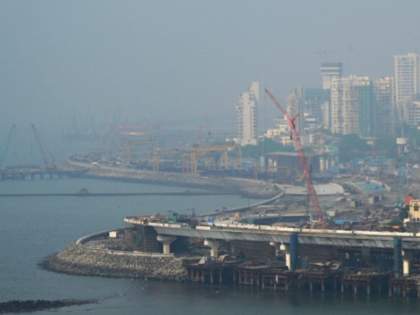Mumbai boasts better post-Diwali air quality than several landlocked cities
By Lokmat English Desk | Updated: November 16, 2023 09:03 IST2023-11-16T09:03:32+5:302023-11-16T09:03:48+5:30
Despite the decline in air quality to the poor category post-Diwali celebrations, the city can find solace in the ...

Mumbai boasts better post-Diwali air quality than several landlocked cities
Despite the decline in air quality to the poor category post-Diwali celebrations, the city can find solace in the fact that the 24-hour average pollution level (measured by the concentration of toxic PM2.5 in the air) was lower at 99ug/m3 on Monday, the day after Diwali. This is in contrast to the recorded level of 107ug/m3 from the previous year, according to data from the Central Pollution Control Board (CPCB).
Despite high humidity, experts attributed the lower pollution levels in the city to strong winds. Central Pollution Control Board (CPCB) data indicated that, on the day after Diwali, Mumbai had lower pollution levels compared to some landlocked cities in northern India. Notably, Mumbai exhibited a more substantial decrease in pollution levels from the previous year in contrast to other coastal cities like Chennai and Kolkata. However, in absolute values, Chennai demonstrated better air quality than both Mumbai and Kolkata this year.
As of Wednesday, the overall Air Quality Index (AQI) for Mumbai stood at 176, categorizing it as "moderate." However, specific areas within the city, including Malad, Navi Mumbai, Chembur, Bandra-Kurla Complex, and Mazagaon, registered poorer air quality zones, falling in the range between 200 and 300, classifying as "poor" on the AQI scale.
Gufran Beig, an expert on air pollution and weather patterns, said Mumbai’s better reading the day after Diwali this year was owing to its sea breeze. “Mumbai has the natural advantage of getting cleaner wind in the form of sea breeze, TOI reported.
Open in app